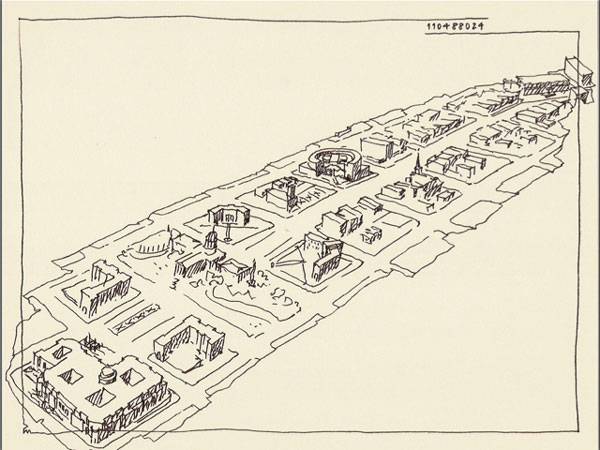The false myth, that the genius architect doesn’t exist anymore, removes the responsibility of artistic creation in the practice of architecture. Instead some kind of committee assembly is promoted. If we accept, that the majority of buildings are designed by small offices, sometimes by sole proprietors, then the solo performance of an individual, as the initiator of the changes made in our environment, is critical!
S/he is the tip of the pyramid, except the pyramid is upside down, so our architect / initiator is at the bottom of the food chain, and the balance between that point and the other points within that volume depends on the quality and speed of communication, emanating from that point towards the others. If the communication is not convincing, and not instantaneous, the weight of the pyramid sinks the architect.
The voices of the contractor, developer, financier could overwhelm any thoroughly considered suggestions, and less systemic arguments could prevail. To avoid this often experienced scenario, the architect has the duty (and self-interest) to initiate this communication, preferably during the design process. If not “I”, but “WE” are the designers, including in this plurality first of all the client, then the whole process of the real coordinated design goes without obstacles!
Since this process could happen parallel with, or can precede, the application of any building information systems, it should happen with understandable and expressive freehand-drawings! It is instant, convincing (even about the professional savvy of the architect) and most of all, communicates directly to the client, excluding so the unwanted interference of the “client’s representative”.
The drawings assembled are examples of directly drawn explorations on opaque paper, as parts of design investigation processes. These explorations usually contain teens, even hundreds of similarly improvised, but thoroughly considered sketches. These follow the “3 P” method, are drawn with Passion, Precision and Patience! (As the fourth “P”, one could add my faithful tool for almost 30 years, my Mont-Blanc-made PEN.)
The drawings pay simultaneous attention to micro- and macro scales of the environment, therefore could serve as basis of questions, which only the client is entitled to answer. Eight of the ten drawings are related to projects, which were eventually constructed, only two of them were parts of the design processes of International Architectural Competitions.
Dr. Peter Magyar, RIBA, AHA, is a distinguished professor of architecture, with an international background in the education and practice of that profession. Authored several books, all listed on Amazon. pmagyar@ksu.edu






